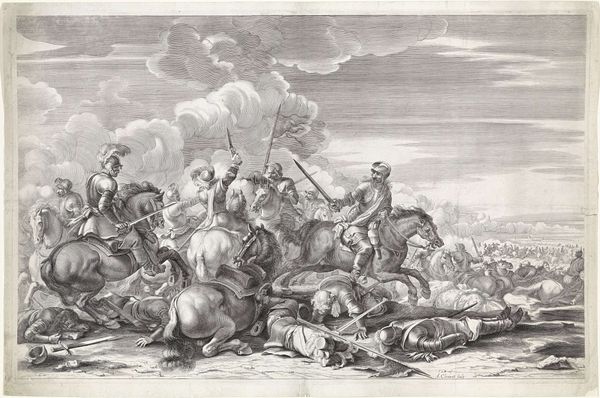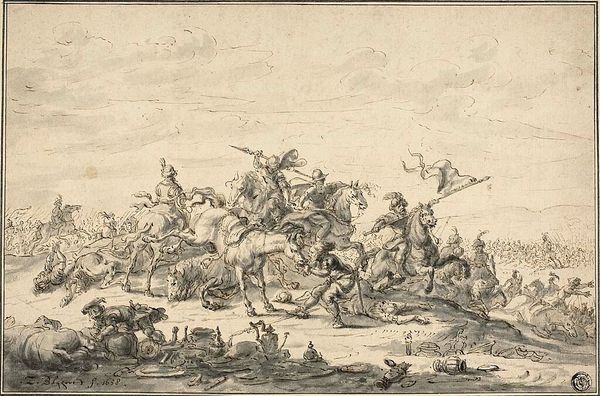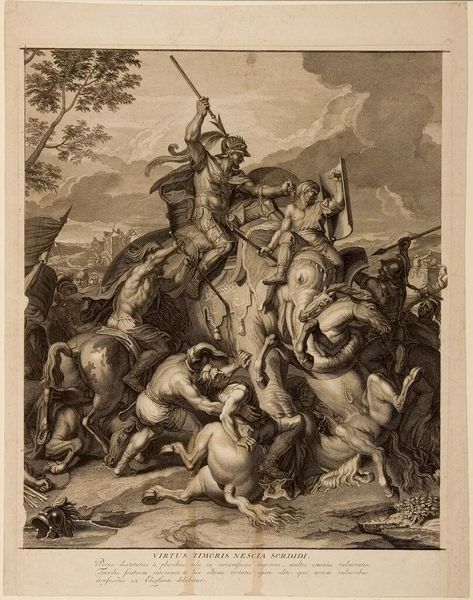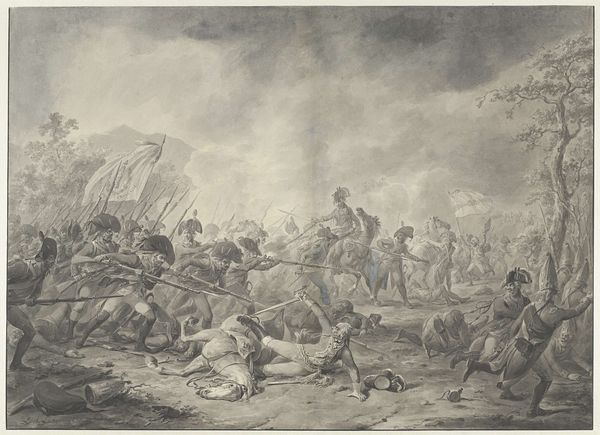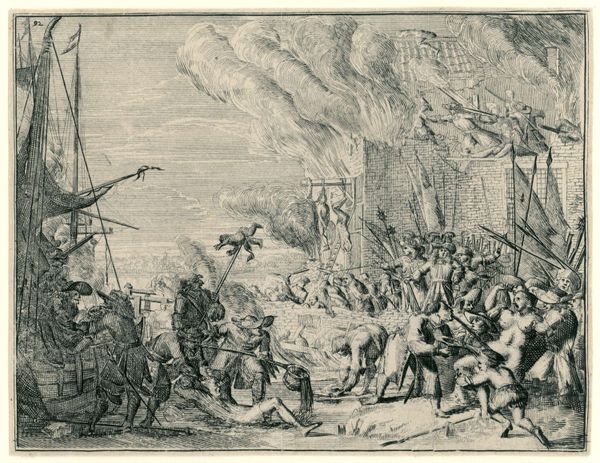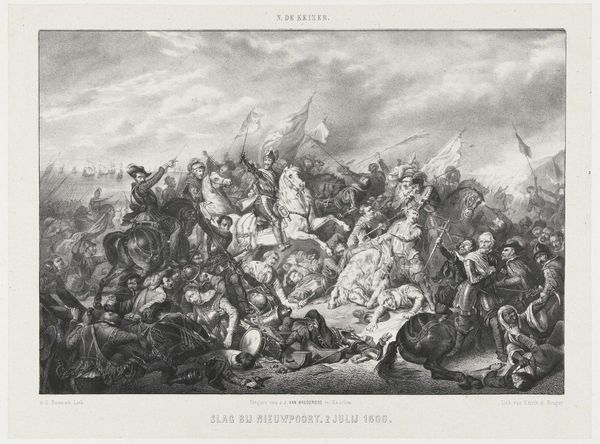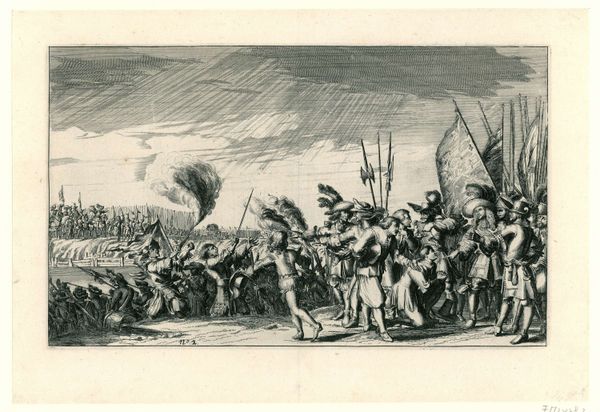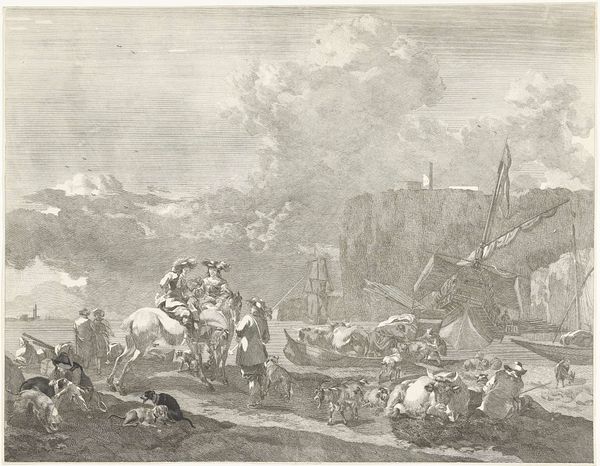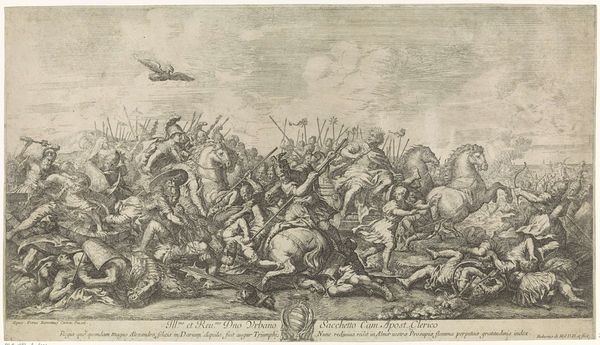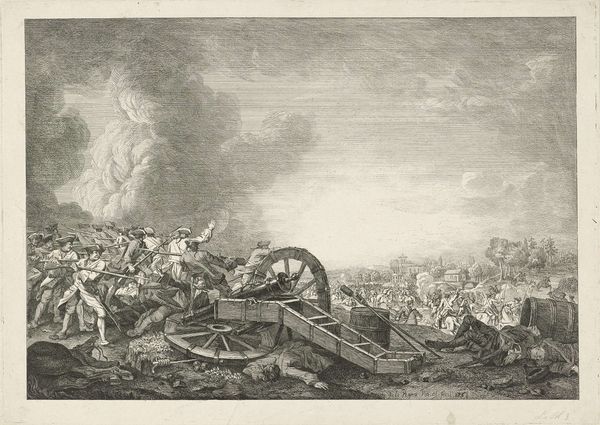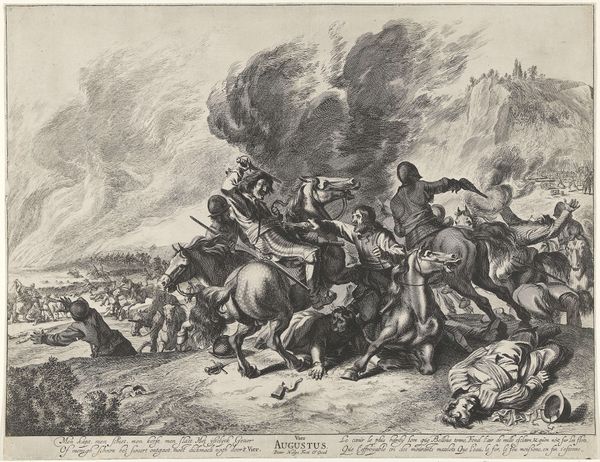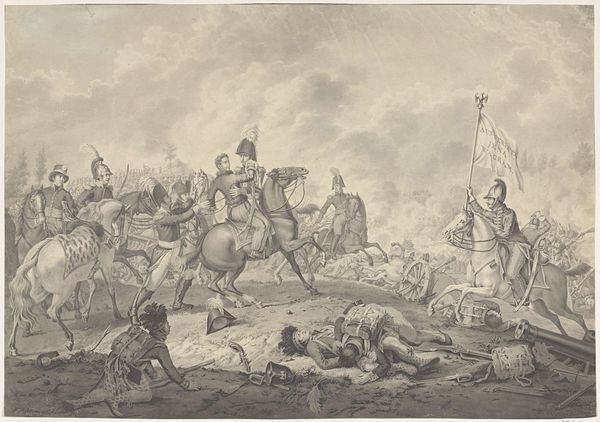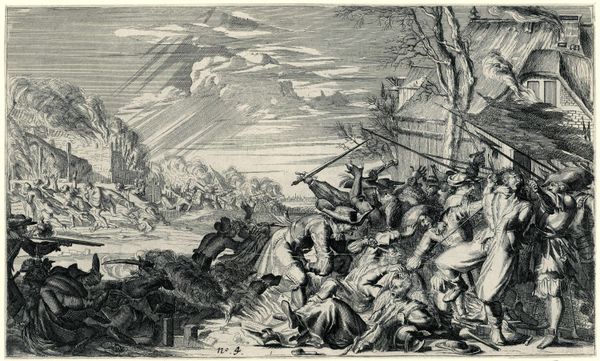
drawing, pencil, charcoal
#
drawing
#
narrative-art
#
pencil sketch
#
charcoal drawing
#
pencil
#
watercolour illustration
#
charcoal
#
history-painting
#
academic-art
#
realism
Copyright: Public Domain: Artvee
Curator: John Trumbull's "Study for The Death of General Warren at the Battle of Bunker Hill" from 1785, rendered in pencil and charcoal, offers a raw glimpse into a pivotal moment of the American Revolution. What springs to mind when you see it? Editor: The chaos, immediately. The figures are frenetic, almost dissolving into the smoky atmosphere. There’s a real sense of the ground itself churning under the weight of this clash. You can feel the tension and almost smell the gunpowder. Curator: Trumbull's academic realism really shines through. Considering its purpose as a study, he masterfully conveys both individual drama and collective frenzy through the material economy of charcoal and pencil marks—you can sense him refining, adding detail only where crucial to the narrative’s force. He wanted to represent this monumental scene truthfully. Editor: It's interesting you highlight the material qualities and the historical accuracy, because, in contrast to his paintings, this doesn’t have the slick veneer of, say, polished oil paint attempting to glorify. Here, the materiality itself—the immediacy of the charcoal—almost works against grand narratives. Curator: In a way, I think that contrast is key to his art—the sketch searches for a vital moment within history, raw emotion made legible. The layering of these lines, erasures, pentimenti - that, in itself, becomes part of the narrative. Look at Warren. Editor: Precisely, Warren becomes symbolic but remains a man whose form melts into the dust from whence he came, a potent reminder of mortality. And, for that to become accessible, charcoal and pencil become essential to a wide audience: an aesthetic revolution mirroring a material one. Curator: It certainly pulls the narrative art from the clutches of elitist mediums. He brings history down to earth—almost a radical democratization of how such momentous occasions can be recorded. Editor: Absolutely. In the end, looking at this drawing gives you that feeling like it’s not just a depiction of war, but it's about what’s left after—dust, sketches, remnants—the very materials of remembrance, right? Curator: I couldn't agree more. There’s a poignant honesty in seeing those initial marks and layers; Trumbull isn’t giving us the polished heroics; we feel a fragile beauty that the real weight of a nation has etched onto it.
Comments
No comments
Be the first to comment and join the conversation on the ultimate creative platform.
